How to play musical ornaments on the violin
Sheet music symbols and how to play the most common musical ornaments, trills and mordents on the violin
You’ve probably seen a tr sign or other weird little twirls above or below the notes. What should you do? Most of the times they refer to musical ornaments. This means that you can embellish the note for an elegant sound.
The way you play these differ per musical era, per country and even per composer. It’s possible to write a book on this, but to help you out quickly, I’ve written this reference guide.
For practical use on your music stand I’ve made a one page PDF cheat sheet, which you can download down below this article.
Grace notes on the violin
Grace notes are small notes before the original note. In sheet music the symbol is a smaller note in front of the original note. There are two types of grace notes on the violin: one with a line through it and one without. The first is an acciaccature and the other an appoggiatura. Let’s discuss them both.
Acciaccatura
Before the note, you see a small note with a line through it. Just imagine your violin fingerboard is hot and you accidentally touch the string with your finger, one note above the original note. Auch! And away. You play this grace note very quickly. It’s before the beat and it doesn’t take away the value of the original note.
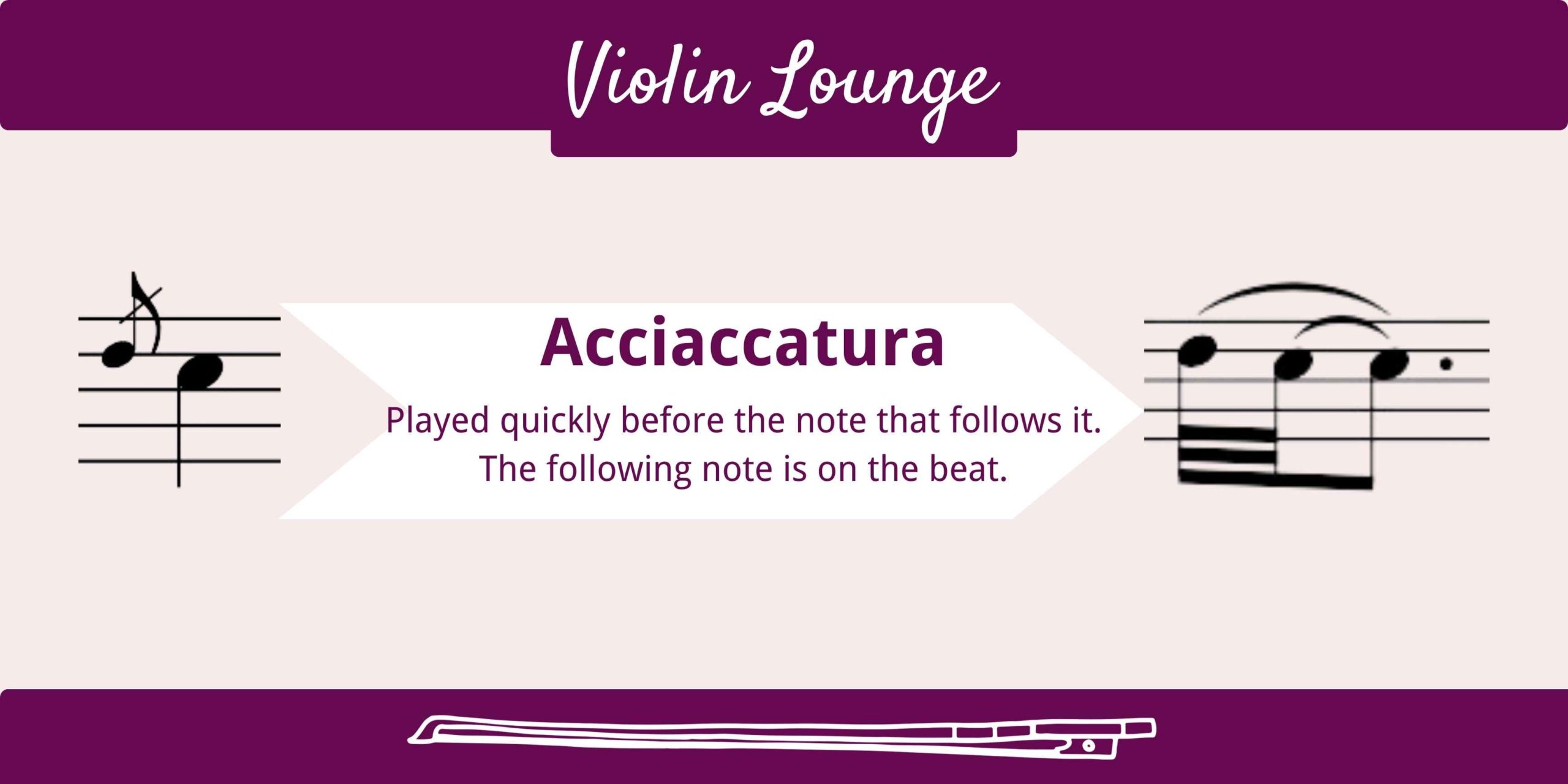
Appoggiatura
The sheet music symbol is the same, but there’s no line through the smaller note. Certainly in classical era music (for example Mozart) we usually play this as two notes of equal value, the first on on the beat. This grace notes ‘eats’ half of the value of the note. Depending on the length of the note and the musical context the grace note can be played shorter.

Upper mordent
Pay the note, then the note above and then the original note again. In Bach’s music the meaning is different and we play a ‘trillo’. In this example we would play D C D C D C. More on that in this article about trills.
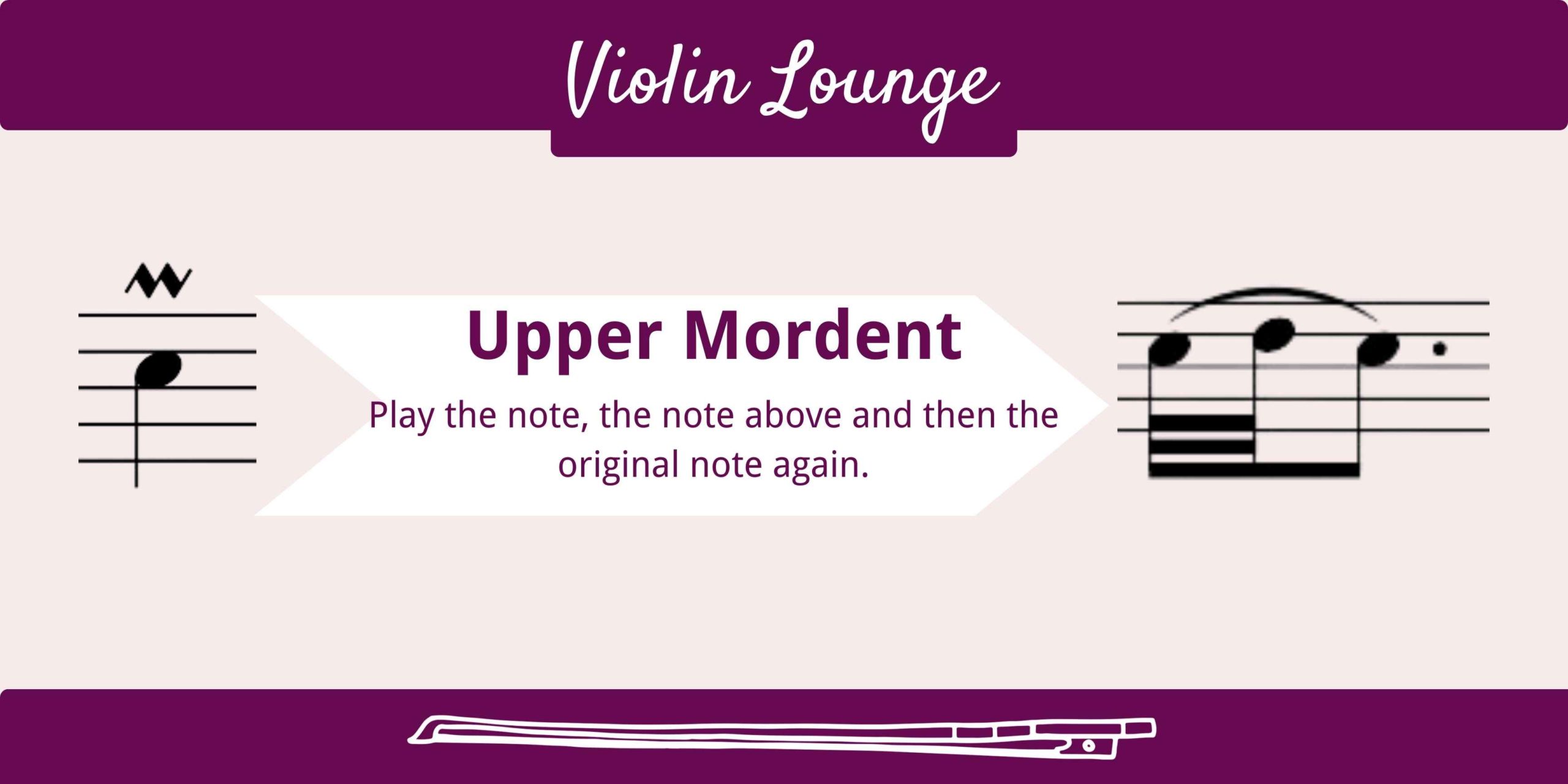
Lower mordent
Most ornaments go above the note, but this one is the opposite of the upper mordent and goes below the note. The rhythm can be slower than shown below, depending on the musical context.
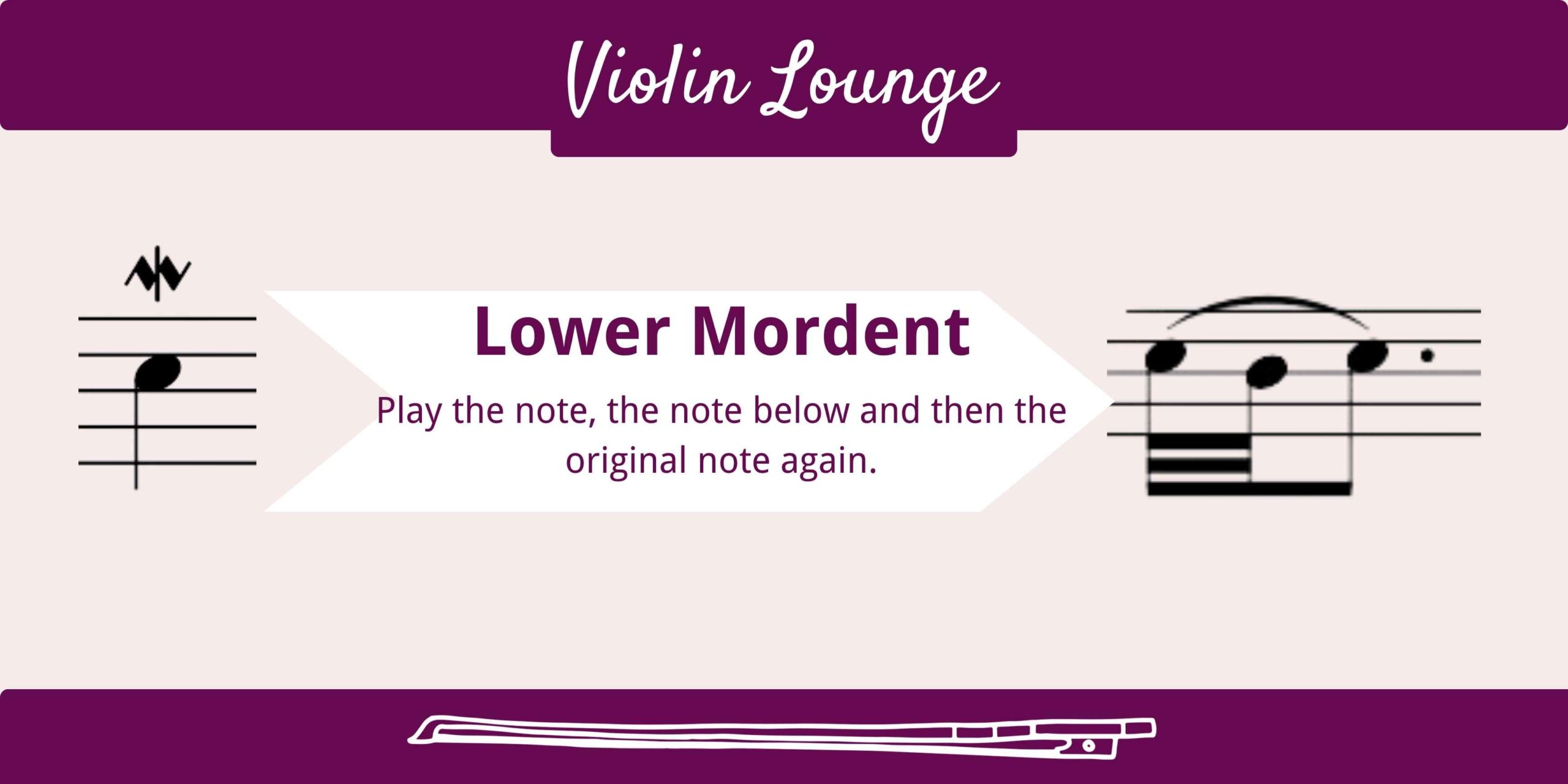
Turn
This is a four note pattern: upper mordent, original note, lower mordent and original note. This is a beautiful embellishment popular in Baroque and Romantic music, but also folk music. There’s an inverted version as well with a line through the S.
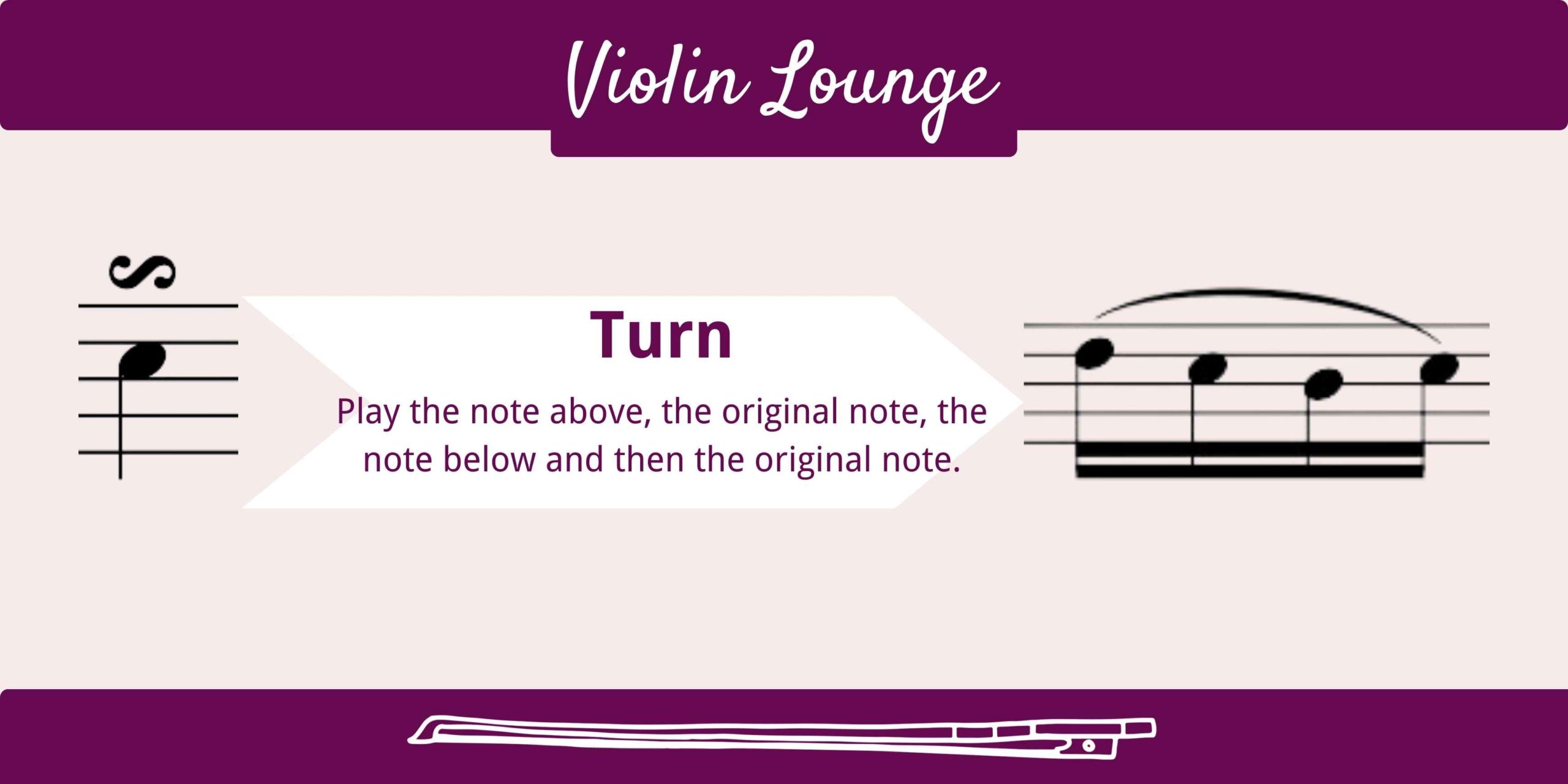
Trill
This is a fast alteration of the original note and the note above. Usually it starts on the note above. How many alternations depends on the length of the note, the musical context and your personal taste.
Trills are great left hand exercises in themselves. Start slowly and practice them with a metronome. Read more about trills on the violin in this article.
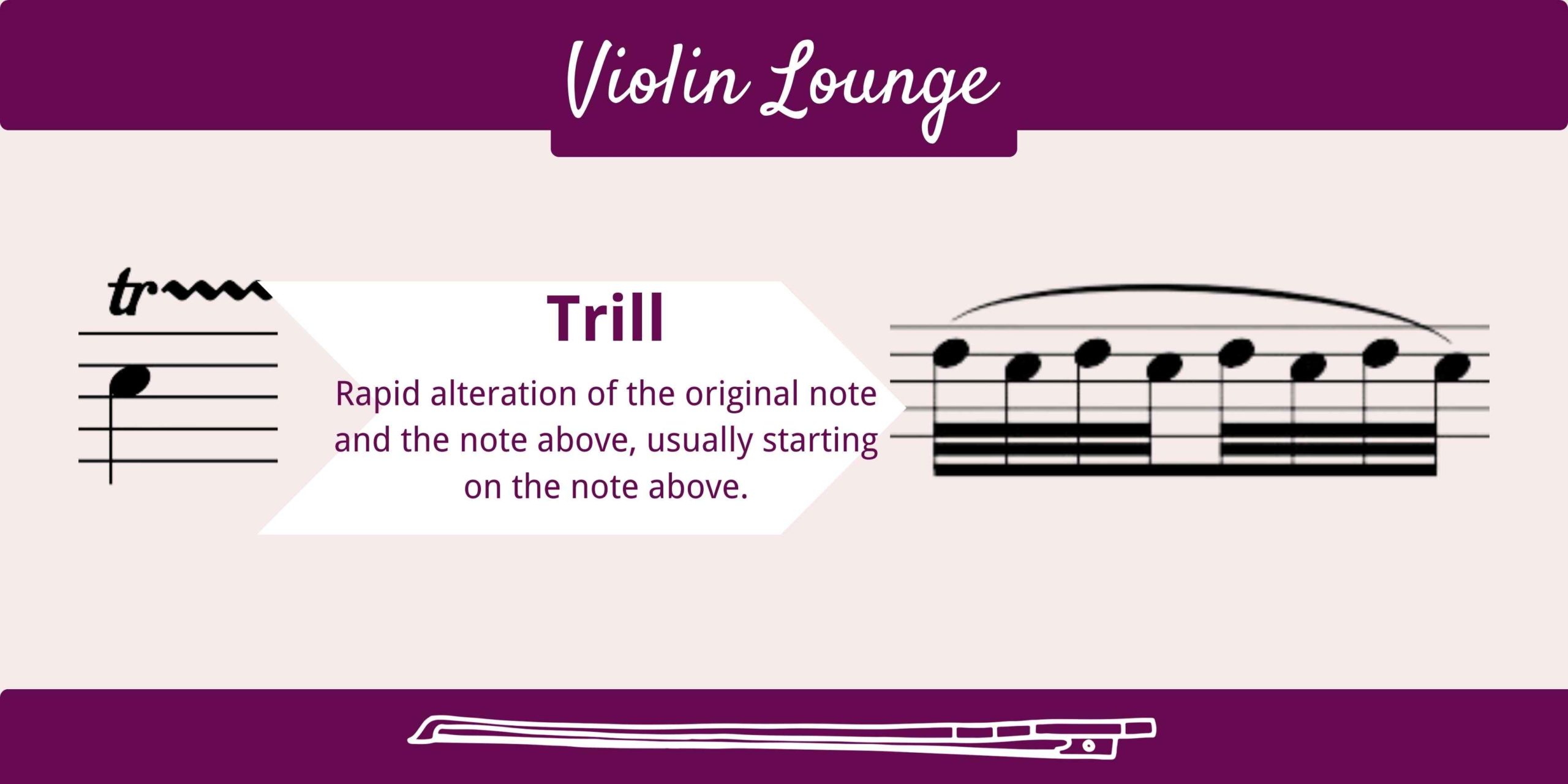
Arpeggio
If a violinist plays a chord of four notes, it’s not possible to play these notes all at once. You can choose to break the chord, meaning you play the lower two notes and then the higher two notes as double stops. You can also choose to play the notes of the chord one by one. We call this an arpeggio. Read more about arpeggios on the violin right here.

Music ornamentation on the violin
I hope this guide has given you some clarity on ornamentation symbols in violin sheet music. As I totally understand that you won’t remember this all right away, I’ve created a one page PDF cheat sheet with all ornaments we’ve discussed. Go to the right (or below on mobile) to download it.
Musical ornaments are a great way to embellish your violin playing. They can make your music very expressive, personal and allow you some creativity.
Whatever style of music play, ornaments are something you will encounter and I hope this guide is a great first step for you to go and explore them.
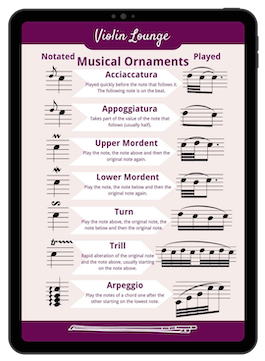
Download the PDF
Cheat sheet for musical ornaments

This is great Zlata! Sometimes this is what makes the song stick in your head! Going hang up this cheat sheet, Thank You !
You’re welcome 🙂
Be carefull, don’t simplify!
Albert Schweizer wrote a complete book -several hundred pages – just about the ornaments in the music of J.S.Bach!
Indeed, this was just a very quick guide that doesn’t apply 100% of the times. Interesting topic!